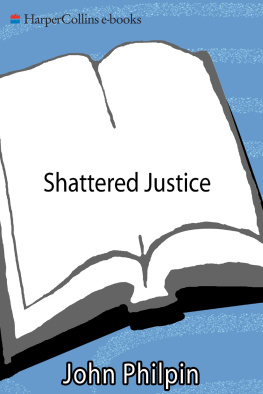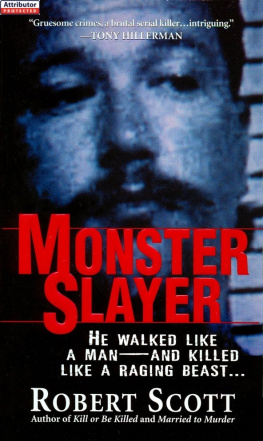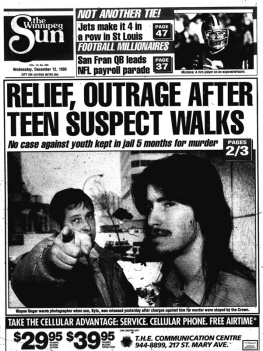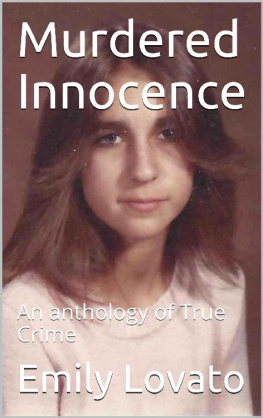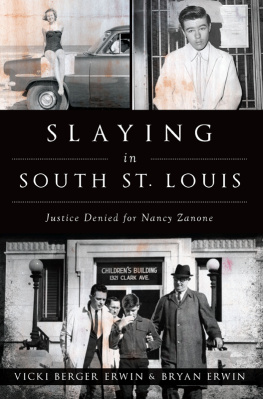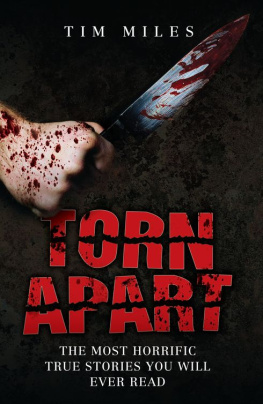SHATTERED
JUSTICE
A SAVAGE MURDER AND THE DEATH OF THREE FAMILIES INNOCENCE
JOHN PHILPIN

For Stephanie Ann Crowe
Contents
Many thanks to TV sports personality Paul Robbins, who helped with video and other media-related matters. Psychologist Dr. Neil Marinello offered his insight and advice. Captain Michael Leclair (Ret.) of the Vermont State Police provided his unique perspective. Kari Sable Burns was most generous with the resources of her true crime and justice Web site, karisable.com. Michael J. Kaelin offered his expertise in computer-based and role-playing games. Hartford, Vermont, Police Chief Joseph Estey offered his unique perspective as President of the International Association of Chiefs of Police. Biochemist Dr. Waverly Thorsen patiently educated the author in the nuances of presumptive testing for blood and DNA analysis. Sierras Toledo Office once again maintained liberal hours and was prepared for all questions.
My agent, Philip Spitzer, has been most supportive.
My editor at Avon Books is Erin Richnow.
Victor Caloca has been officially recognized for his superior investigative work in the Crowe case. San Diego Countys citizens have called or stopped him on the street to thank him for his outstanding contributions to the community. With customary humility, Vic would like to dismiss his accomplishments as just doing my job. As will become evident in these pages, he was more than doing his job. His goal was clear from the moment he received the case files. Through four grueling years, he read, analyzed, interviewed and rein-terviewed, reenacted, consulted outside experts, banged heads with other cops, with politicians, with the criminal justice system itself. In the end he delivered: justicia para Stephanie.
This story is true.
With the exception of the victim, her sister, her brother, and her brothers two friends, the names of all minor children have been changed.
Where conversations are reported, they are based on the recollections of one or more of the participants, official documents, transcripts, audio- and videotape recordings, and personal notes.
The police interrogation sessions with Michael Crowe, Joshua Treadway, and Aaron Houser, have been cited and excerpted elsewhere. They are included here in considerable detail to offer the reader a sense of context and the nature of interrogative techniques. These interviews contain a blizzard of metaphor, analogy, and dimestore psychology that derailed a homicide investigation and nearly shattered the lives of three young men.
John Philpin
Reading, Vermont
January 2005
And what difference could it make if,
after being charged with murder,
he were executed because he didnt weep
at his mothers funeral... ?
Albert Camus, The Stranger
It does not require many words to speak the truth.
Chief Joseph, Nez Perce
T hey were the dead.
Seventeen, eighteen, nineteenthe cop lost count. He walked back through the dormitory and began again. One, two, three.
There were men and women, young and old, dressed in black pants, black shirts, black tennis shoes, each covered with a purple shroud. Thirty-eight, the cop said to himself.
It was March 1997 in San Diegos Rancho Santa Fe, an enclave of million-dollar mansions, sculpted greenery, royal palms, and exotic birds. Outside, soft breezes were fragrant with eucalyptus and bougainvillea. Inside, the still, acrid scent of decomposition threatened to choke the living.
The cops name was Victor Caloca, a veteran detective with the San Diego County Sheriffs Department. He stood in the master bedroom.
Thirty-nine, he said, staring at the final shroud. You sonofabitch, you killed these people.
The man beneath the shroud was Marshall Apple-white, the sixty-six-year-old charismatic leader of Heavens Gate, an ascensionist cult prepared to make its transition to a higher level of existence. Applewhite and his minions had packed their bags for the trip to a UFO they believed trailed the Hale-Bopp comet. Each had identification and pocket money.
On videotapes, and in a letter to a former group member, the travelers said they were going to a better place. Phenobarbital, vodka, and plastic bags were their tickets to the Kingdom of Heaven.
San Diego District Attorney Paul Pfingst told the media, This is a Jonestown, recalling the 1978 mass suicide in Guyana.
As Vic Caloca yanked open closets and drawers, fearing that he might find dead children, he saw only one suicideApplewhiteand thirty-eight homicides. The cop had no use for the nuances of politics. Murder was murder.
San Diego County Medical Examiner Brian Black-bourne told news reporters that the cult members appeared to have died in scheduled shifts. Investigators discovered plastic bags with elastic around them in the trash behind the house. The cult members had been dead for varying lengths of timesome twenty-four to thirty-six hours, others three days or more. One group of travelers assisted another, until they were down to the final two, who were found with their plastic bags intact over their heads. Eight members had been surgically castrated at some time in the past.
Applewhites journey began in the 1960s. The married father of two was the music director at one of the largest churches in Alabama. He also sang opera and taught music. In the 1970s he admitted himself to a Texas hospital because of his concerns over homosexual thoughts and desires. During his hospitalization he met nurse Bonnie Lu Nettles, an astrology dabbler who would leave her husband and children to become Applewhites asexual partner, as the two traveled in the western United States recruiting followers.
Calling themselves Bo and Peepor, The Two Applewhite and Nettles initially organized Human Individual Metamorphosis (HIM), followed that with Total Overcomers Anonymous (TOA), and after nearly three decades of proselytizing his delusion, Applewhite (now, The OneNettles died of cancer in 1985) settled his group as Heavens Gate in Rancho Santa Fe.
In his years as a sheriffs deputy, Vic Caloca had worked crimes against children, homicide, and archive cases. The seasoned investigator with a reputation as a tough, letter-of-the-law cop thought he had seen everything at least once. But there was no way to prepare for the aftermath of a madmans delusionApplewhites certainty that to avoid death and spading under on earth, one must commit suicide, returning to life aboard a UFO that would transport its passengers to a higher plane of being.
Caloca was uncompromising. If Charles Manson was a murderer, so was Marshall Applewhite.
Ten months after Heavens Gate, Vic Caloca was working a homicide case from the departments archives when he heard about the murder of a young girl in Escondido, a city of 125,000 in San Diegos North County area. The murder of any child disturbed the cop. This kid had been killed while sleeping in her bed. A couple of days after the initial report, Caloca was relieved to read that the Escondido police had made an arrest in the case. He had no reason to think that the nature of destructive delusion, or the childs murder, would reenter his life and set him on a collision course with San Diego Countys top political powers.
The Horror
And much of Madness,
and more of Sin,
And Horror the soul of the plot.
Edgar Allan Poe
H e paced and talked, jabbed a fist into the air, and waved his arms in wild, wide arcs. His long, disheveled, dirty blond hair fanned when he spun around to walk back to where he had begun.
The man was alone at the bus stop on the corner of Date and Grand. He was one of Escondidos homeless men, many of them mentally ill, drug-addled ex-cons scruffy, layered in soiled, shabby clothing. He wore a jacket over a purple shirt over a red shirt, and his legs were bulked with multiple pairs of pants. The southern California days were comfortable enough, but the nights were cold. It was Tuesday, January 20, 1998, late afternoon.
Next page
